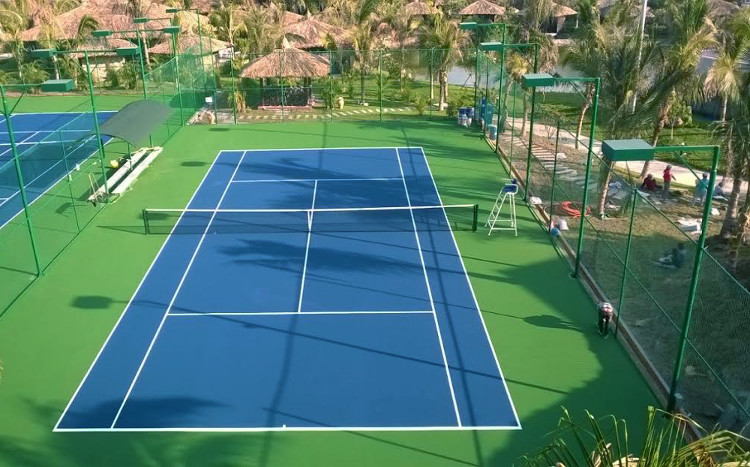The impact of yard surface material on tennis matches
Hard courts, clay courts or lawns have a great influence on tennis matches in terms of tactics, speed and competition time.
There are 3 main types of tennis courts: hard courts, clay courts and grass courts.
Hard courts are suitable for offensive matches. The surface of the yard is made of concrete or asphalt and on the surface is covered with layers of synthetic rubber or acrylic resin.
The hard and uniform ground makes it easier for players to guess the ball's trajectory than the grass and clay ground. Hard ground also makes the ball bounce high because the surface of the yard absorbs less energy.
However, the disadvantages of hard courts are easy to cause injuries to players, especially knee and ankle injuries.

Hard courts are suitable for offensive matches.
The second type of yard is clay . This yard is usually made of crushed bricks. This is the ground with the slowest ball speed, so clay matches are often the longest.
The pitch allows players to take long sliders to control
ball. Clay yard is not suitable in areas with high rainfall. The yard is soaked with water so it is very dry after heavy rain. Players with defensive styles prefer to stand at the end instead of on the net . often like to play on clay courts.
Meanwhile, the grass field is the favorite of the players who have a play style and catch a volleyball net suitable for high-speed attacking matches and take place in a short time.
The grass surface makes the ball slide quickly, with low bounce and unpredictable orbits. Playing on the grass helps prevent dazzling, but players quickly wear out their physical strength.
- Why do tennis balls have a ruffled green surface?
- History of Wimbledon tennis tournament
- Video: The device helps pick up 60 tennis balls in a moment
- Why is table tennis so flammable?
- Image beams use matches to turn into animals
- 'Blue or yellow tennis ball?' - The question that is most concerned by the world today
- Why should you bring tennis balls with you when flying?
- Robot playing table tennis of Vietnam to Europe
- Video: Astronaut playing table tennis in the universe
- November 27, 1826 - Match matches are officially born
- Nano material and rose petals
- New type of super waterproof oil and water material
 'Fine laughs' - Scary and painful torture in ancient times
'Fine laughs' - Scary and painful torture in ancient times The sequence of numbers 142857 of the Egyptian pyramids is known as the strangest number in the world - Why?
The sequence of numbers 142857 of the Egyptian pyramids is known as the strangest number in the world - Why? History of the iron
History of the iron What is alum?
What is alum?